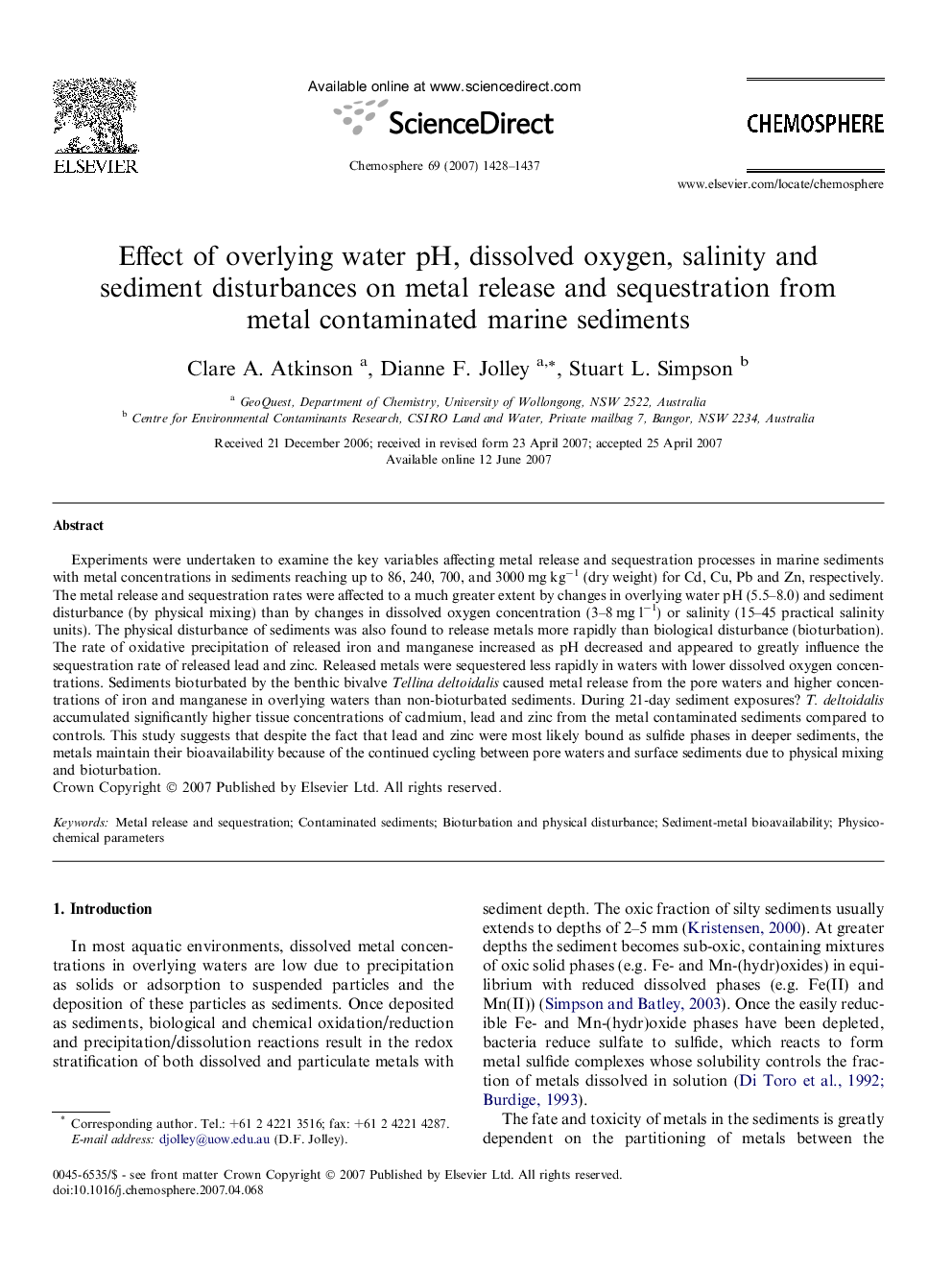| Article ID | Journal | Published Year | Pages | File Type |
|---|---|---|---|---|
| 4415213 | Chemosphere | 2007 | 10 Pages |
Experiments were undertaken to examine the key variables affecting metal release and sequestration processes in marine sediments with metal concentrations in sediments reaching up to 86, 240, 700, and 3000 mg kg−1 (dry weight) for Cd, Cu, Pb and Zn, respectively. The metal release and sequestration rates were affected to a much greater extent by changes in overlying water pH (5.5–8.0) and sediment disturbance (by physical mixing) than by changes in dissolved oxygen concentration (3–8 mg l−1) or salinity (15–45 practical salinity units). The physical disturbance of sediments was also found to release metals more rapidly than biological disturbance (bioturbation). The rate of oxidative precipitation of released iron and manganese increased as pH decreased and appeared to greatly influence the sequestration rate of released lead and zinc. Released metals were sequestered less rapidly in waters with lower dissolved oxygen concentrations. Sediments bioturbated by the benthic bivalve Tellina deltoidalis caused metal release from the pore waters and higher concentrations of iron and manganese in overlying waters than non-bioturbated sediments. During 21-day sediment exposures? T. deltoidalis accumulated significantly higher tissue concentrations of cadmium, lead and zinc from the metal contaminated sediments compared to controls. This study suggests that despite the fact that lead and zinc were most likely bound as sulfide phases in deeper sediments, the metals maintain their bioavailability because of the continued cycling between pore waters and surface sediments due to physical mixing and bioturbation.
